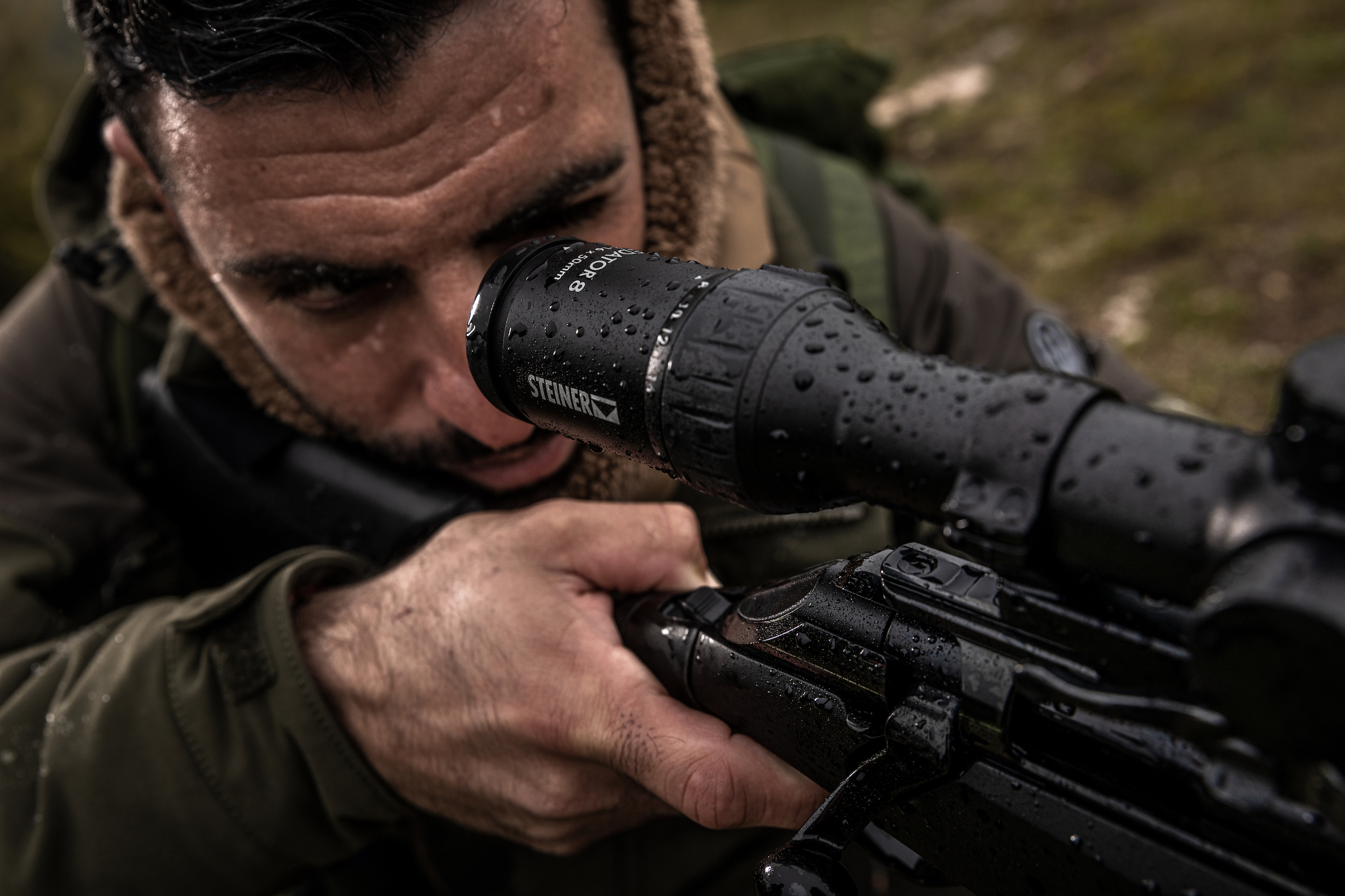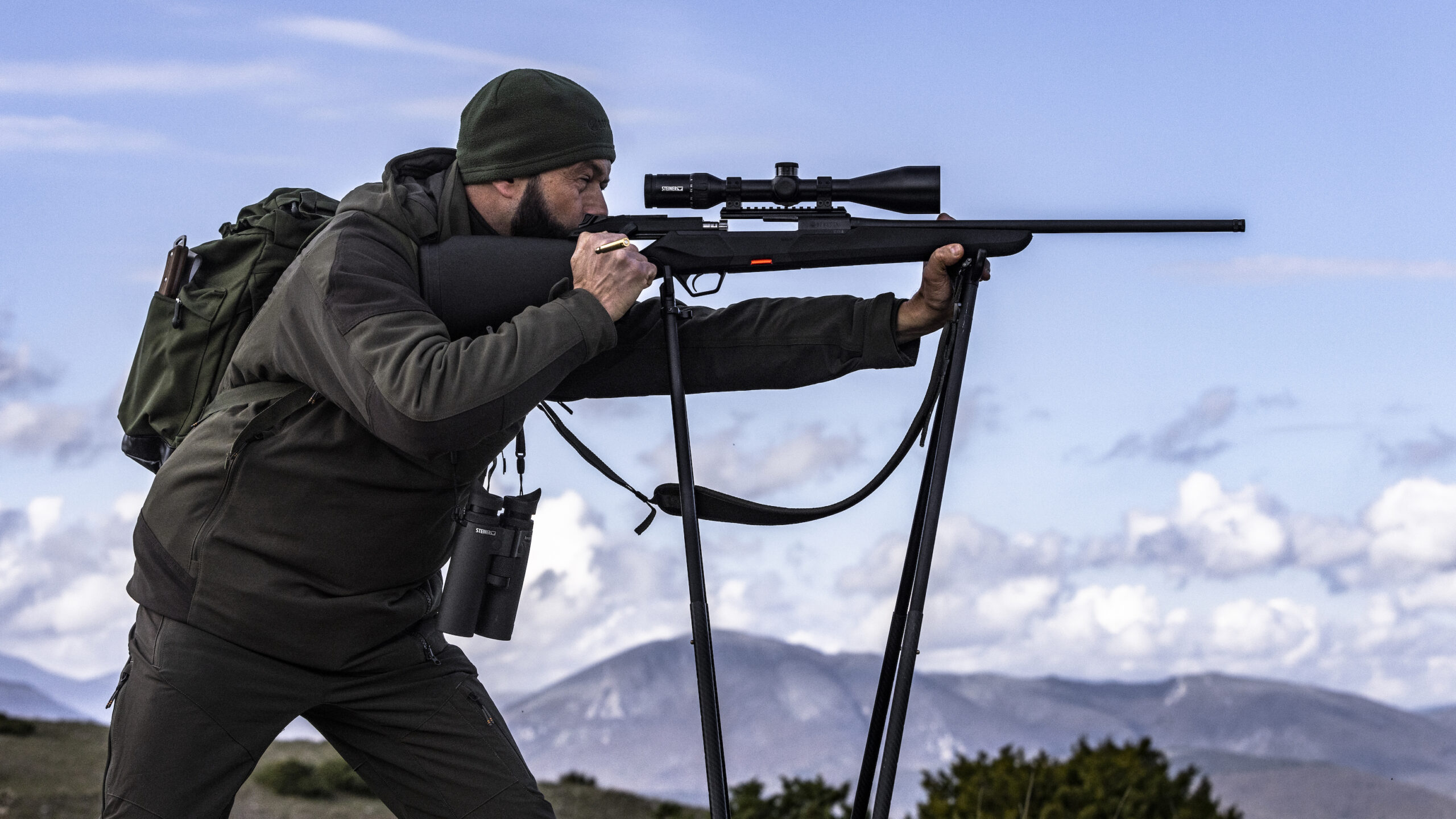Clarity and light transmission are the key performance factors in a dependable rifle scope. Here’s what you need to know…
We’ve all been there. Darkness is falling, the clouds have turned an ugly gray, and a slight mist is in the air. A husky mule deer is slipping through tall, wet grass and muted brush 200 yards out. You track him anxiously through your scope, hoping for that clear shot before the end of legal shooting light that is only minutes away.
This is the condition where good glass can be the deciding factor between success or an unfilled tag. Maximum light transmission, a sharp image, and clear definition of the animal and the vegetation around it are the variables that make it happen.
This is the moment you’ve waited all year to arrive. Is that black tube atop your rifle up to the challenge?
Although we applaud optic manufacturers for striving to engineer new and improved solutions to problems we hunters experience in the field, we must be wary of getting hung up on the latest and greatest features offered in today’s rifle scope market. Easier methods for dialing in bullet drop compensation, diverse reticle options, and “smart scope” features that calculate ranging and firing solutions are, indeed, of great benefit. Nevertheless, optic effectiveness in real-world conditions really comes down to clarity and light transmission.
In short, there are many features built into a modern riflescope that can help us make the shot, but you must be able to see the shot before you can take it. And that means maximum clarity of view and light transmission through the tube.
The challenge for many hunters is that evaluating a scope’s clarity and brightness is somewhat subjective. What, exactly, is it that makes one scope perform better in these two categories than another?
High-quality glass is the foundation. We’re talking really high-quality glass. There is a reason high-end camera lenses and expensive riflescopes live in the $1,000 category. It’s not all about the glass, but it is the biggest portion of the cost variance. “You get what you pay for” is an axiom that certainly holds true for optics.
Besides the glass used in making a quality scope, what other factors determine a scope’s clarity and light transmission performance?
Minimal chromatic aberration and minimal light reflection.
We’ve all seen chromatic aberration when looking through low-quality scopes. This is where multiple colors are visible, especially around the perimeter of the viewing area and, in some cases, around the viewed subject. This occurs when different wavelengths of incoming light do not converge equally at the focal point. This causes the individual wavelengths to be visible. It is much like a prism that separates white light into its component wavelengths.

The primary way this is corrected is through multi-lens construction, whereby two or more lenses work together to establish a single focal point for all light wavelengths. Another method (usually in combination with multiple glass elements) is to apply special coatings to the lenses.
Regardless of the method(s) the optic manufacturer uses to reduce or eliminate chromatic aberration, the result is a clearer, sharper optical view. Obviously, this is important in a hunting rifle scope. Details are more defined, making it easier to pick up your target in a broader range of lighting and environmental conditions. Think observing a bull elk standing just inside of dark timber and you’re on the opposite hillside 300 yards away. With all light wavelengths precisely focused, the view will be much crisper, allowing you to better locate your target and to place that “one and done” shot into the vitals.
While minimizing chromatic aberration is important for achieving viewing sharpness and clarity, arguably more important to the hunter is the elimination of light reflection. We’re not talking about light reflecting off the front of your scope’s objective lens and giving away your location, but instead are referring to light being reflected by all lenses in your scope.
We all understand that light reflects off glass. What you may not realize is that any light reflected off glass is light that is not passed through the glass. It is being reflected away from the glass. In other words, it is light lost. Now, translate that to a rifle scope.
A rifle scope is comprised of several individual glass elements. Each of those elements has the propensity to reflect light. The more light that the glass reflects, the less light that makes it to your eye, effectively dimming your view through the scope and making things darker.
The goal, therefore, of the optic manufacturer is to reduce glare or reflection, as much as possible so that the maximum available light is transmitted through the scope and to your eye. This is vitally important to the hunter because, as we know, much of the game action we encounter is around dusk, when we need every last bit of light we can get.
In the realm of anti-reflective coatings, the more the better. You’ve likely come across optic specifications that refer to lenses as being coated, fully coated, multi-coated, and fully multi-coated. These terms refer to the combination of the number of lenses, lens surfaces, and layers of anti-reflective coatings that are applied to the lenses in a rifle scope. To keep this discussion out of the weeds, just know that “coated” (one layer of coating is applied to one surface of one lens) is the lowest level of coating (least able to reduce overall glare) while “fully multi-coated” (all surfaces of all lenses receive multiple anti-reflection coatings) represents the highest level of anti-reflection performance. Of course, the latter’s manufacturing investment translates to higher costs.

Once again, you get what you pay for.
Beyond enhancing light transmission, anti-reflective coatings also help to boost viewing clarity. So, when you find an optic that combines high-quality, low-dispersion glass with generous anti-reflective coating, images are brighter and sharper with greater contrast. For hunters, this is a big deal.
Another benefit of quality optics with exceptional clarity and high light transmission properties is reduced eye strain and fatigue. If you’ve ever spent hours with your gun propped on a field rest, using your rifle scope to glass, you know what we’re talking about. It is hard on the eyes. Good glass will go a long way toward mitigating such problems.
One company at the forefront of performance in the hunting field is Steiner Optics.
For over three-quarters of a century, Steiner has continually worked to advance optical technology for hard-duty field applications. The company’s experience in lens manufacturing and technical coating development has produced top-tier binoculars and rifle scopes deployed throughout the world for austere military and law enforcement use. That same technology also translates to Steiner’s sporting optics, represented in its Predator 4, Predator 8, and new H6Xi rifle scope lines.
Steiner builds its hunting rifle scopes with the same focus on rugged durability and dependable performance as it does its military-grade scopes. That includes utilizing the highest-quality glass crafted, polished, and hand-inspected to Steiner’s rigorous manufacturing standards. To further optical performance, Steiner multi-coats all air-to-glass surfaces with its own mineral and rare earth compound formulations to ensure the kind of maximum clarity and optimal light transmission we just discussed—the kind of razor-sharp views and bright, high-contrast imagery that helps you quickly get on target when the light is failing.
The Predator 4 series scopes follow the “everything you need and nothing you don’t” mold of tough simplicity. The sleek 30mm tube hosts low-profile turrets and an ergonomic side focus knob/illumination dial so you can quickly get on target in any condition. Offered in 2.5-10×42, 4-16×50, and 6-24×50, all Predator 4 scopes feature the easy-to-use second focal plane E3 Ballistic reticle. With its 100-yard holdover demarcations for bullet drop compensation and 5 and 10 mph holdoff marks for crosswind, this lightweight scope is ideal for the hunter who knows his or her load and simply requires that crisp and brilliant sight picture to seal the deal.
For hunters who pursue big game where far shots may be required, the Predator 8 rifle scopes stand ready. These scopes, available in 4-32×54, 3-24×50, and 2-16×42, are designed for the practiced dial-to-distance shooter.
The elevation turret on the Predator 8 makes bullet drop compensation a cinch. Three numbered and moveable rings let the shooter establish a precise zero for four custom distances. Once it’s time to take the shot, simply rotate the turret to the numbered distance and shoot. An integrated Zero Mode then allows the turret to be rotated back to zero without having to come off the optic.
As with the Predator 4, the Predator 8 rifle scope includes an illuminated reticle with 11 brightness settings to match all lighting conditions. The same E3 Ballistic reticle comes with the 2-16×32 and 3-24×50 models, with the 4-23×50 scope hosting the SCR reticle. Designed for maximum precision, the SCR reticle is ideal for shooters who are adjusting by millimeters at the range or hunters looking for a slightly more tactical edge while in the field.
The new H6Xi delivers the perfect option for the “modern hunter” who prefers a first focal plane design and characteristics found on Steiner’s tactical line of T6Xi series of scopes. Available in a 2-12×42, 3-18×50, and 5-30×50 with an FFP MHR (Modern Hunting Reticle,) the USA made H6Xi is sure to have an appeal with those summiting the most difficult terrain and demanding the absolute most out of their gear.
We put a lot of time, effort, and money into our outdoor adventures. Most every piece of equipment we take into the field serves a critical function. The rifle scope sits behind only the gun and the cartridge in the importance hierarchy. Good glass is an investment, but one that pays dividends when the decisive moment arrives.
